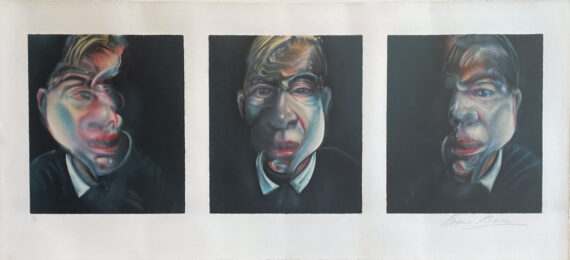


1909-1992
Francis Bacon was an Irish painter who was famous for his abstract imagery. His paintings were typically figurative images painted in the environment of empty backgrounds or within geometric cages of steel or glass, all painted with flat, monochromatic color palettes. Francis Bacon frequently created series of paintings that depicted the same subject matter over a period of time. This was due to his tendency to focus on the same themes and variations of introspective, somber and existential subjects as his artistic motifs.
Perhaps the most famous work of Francis Bacon is the one which brought him his first success as an artist. His Three Studies for Figures at the Base of a Crucifixion was exhibited for the first time in 1945, and many felt that this work placed him securely as a well-regarded artist. Though the figures in this triptych are barely recognisable as human, they nevertheless express a stark and raw expression of negative bodily energy. Another notable painting is Study after Velazquez’s Portrait of Pope Innocent X from 1953. Journalist Wyndham Lewis wrote that Francis Bacon as an artist was ‘astonishingly sinister’. Because Bacon’s fame as an artist occurred during the post-World War II era, many critics felt that his art was a reflection and representation of the brutality experienced during those years and the deprivation of the years after. In his later decades, Francis Bacon painted many portraits of his companion George Dyer. Bacon’s Black Triptych includes scenes of the moments just before and after Dyer’s suicide. The paintings have been described as ‘brutal depiction’ of this tragic event in Bacon’s life, but the work is also considered to be one of Bacon’s greatest masterpieces.